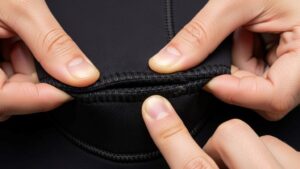Hand Weakness After Long Bike Ride

Long bike rides offer incredible benefits for your fitness and mental health. However, many cyclists experience an uncomfortable side effect that can turn an enjoyable ride into a painful ordeal. Hand weakness after extended cycling sessions affects riders of all skill levels, from weekend warriors to seasoned professionals. Understanding why this happens and how to address it can make your rides more comfortable and enjoyable. According to cycling experts at Cyclist View, proper hand positioning and bike setup play crucial roles in preventing these common issues.
Understanding the Connection Between Cycling and Hand Numbness
When you spend hours gripping handlebars, your hands bear significant weight and pressure. This constant pressure compresses the ulnar and median nerves in your palms and wrists. Additionally, vibrations from the road travel through your bike frame directly into your hands. The combination of sustained pressure and repetitive vibration creates the perfect conditions for nerve compression. Therefore, cycling and hand numbness often go hand in hand, especially during longer rides.
The ulnar nerve runs along the pinky side of your hand, while the median nerve travels through your wrist’s center. When these nerves experience prolonged compression, they send distress signals to your brain. You might feel tingling, numbness, or weakness in your fingers and hands. Sometimes, the symptoms persist even after you finish riding. Many cyclists ignore these early warning signs, which can lead to more serious conditions over time.
Common Causes of Hand Weakness During Cycling
Several factors contribute to hand weakness on long rides. First, improper handlebar height forces you to put excessive weight on your hands. When your handlebars sit too low, your body naturally shifts forward, increasing hand pressure. Second, gripping the bars too tightly restricts blood flow and accelerates nerve compression. Many riders unconsciously clench their handlebars, especially when tired or navigating rough terrain.
Your riding position also matters significantly. A forward-leaning position places more stress on your hands and wrists. Additionally, worn-out or inadequate handlebar padding fails to absorb road vibrations effectively. The material and thickness of your handlebar tape or grips directly impact comfort levels during extended rides.
Furthermore, inadequate core strength forces your hands to support more body weight than necessary. Strong core muscles help distribute your weight more evenly across the bike. Without this support, your hands bear an unfair burden throughout your ride.
The Role of Bike Fit in Hand Comfort
Proper bike fit serves as your first line of defense against hand weakness. According to research published in the National Institutes of Health, cycling-related nerve compression affects a significant percentage of regular cyclists. A professional bike fitting addresses multiple factors simultaneously, including saddle height, handlebar reach, and overall frame geometry.
When your saddle sits at the correct height, you maintain better weight distribution across your entire body. Similarly, handlebar reach affects how much you lean forward and consequently how much pressure your hands endure. Even small adjustments can make substantial differences in comfort levels during long rides.
Your brake lever position also influences hand comfort. Levers positioned at awkward angles force your wrists into unnatural positions, increasing strain on nerves and tendons. A qualified bike fitter evaluates these elements comprehensively, ensuring your setup matches your body dimensions and riding style.
Immediate Solutions for Hand Weakness
When hand weakness strikes during a ride, several immediate actions can provide relief. First, change your hand position frequently throughout your ride. Road bikes with drop bars offer multiple hand positions, so take advantage of them. Shift between the tops, hoods, and drops every few minutes to redistribute pressure.
Additionally, shake out your hands periodically while riding safely. This simple action promotes blood circulation and relieves accumulated tension. However, only do this when traffic and road conditions permit safe one-handed riding.
Loosening your grip also helps tremendously. Consciously relax your hands and maintain a light touch on the handlebars. Your hands should guide the bike, not strangle it. Moreover, standing up on the pedals occasionally removes all weight from your hands, giving them a complete break.

Long-Term Prevention Strategies
Preventing hand weakness requires a multifaceted approach. Start by upgrading your handlebar padding with quality tape or ergonomic grips. Gel padding provides excellent shock absorption, while thicker tape reduces vibration transmission. Some cyclists prefer double-wrapping their handlebars for extra cushioning.
Investing in padded cycling gloves offers another layer of protection. Quality gloves feature strategic padding that cushions pressure points without compromising grip or control. However, gloves should fit properly without bunching or creating additional pressure points.
Strengthening your core muscles through regular exercises reduces reliance on your hands for support. Planks, bridges, and other core-focused workouts improve your overall cycling posture. Similarly, wrist and forearm strengthening exercises build resistance to fatigue and compression.
Furthermore, gradually increasing ride duration allows your body to adapt progressively. Jumping from short rides to century distances without proper conditioning overwhelms your hands and nervous system. Build up your endurance slowly, giving your body time to adjust to longer durations.
When to Seek Medical Attention
While mild hand discomfort typically resolves with rest and adjustments, certain symptoms warrant medical evaluation. Persistent numbness lasting beyond a few hours after riding requires professional assessment. Similarly, progressive weakness that worsens over multiple rides signals potential nerve damage.
If you experience pain radiating up your arm or into your shoulder, consult a healthcare provider promptly. These symptoms might indicate more serious conditions like carpal tunnel syndrome or cubital tunnel syndrome. Early intervention prevents permanent nerve damage and keeps you riding safely.
A sports medicine physician or neurologist can perform specific tests to evaluate nerve function. They might recommend imaging studies, nerve conduction tests, or physical therapy. Treatment options range from simple modifications to your bike setup to more intensive interventions if necessary.
Conclusion
Hand weakness after long bike rides stems from multiple interconnected factors, including nerve compression, improper bike fit, and inadequate conditioning. Understanding the relationship between your riding position, equipment choices, and physical preparation empowers you to address these issues effectively. By implementing proper bike fit, upgrading your equipment, strengthening your core, and listening to your body’s signals, you can enjoy longer rides without debilitating hand discomfort. Remember that prevention proves easier than treatment, so take proactive steps before minor discomfort becomes a serious problem. With the right approach, you can keep your hands strong and comfortable for many miles to come.
Frequently Asked Questions
How long does hand numbness last after cycling?
Mild hand numbness typically resolves within 30 minutes to a few hours after finishing your ride. However, if numbness persists beyond several hours or occurs frequently, it indicates excessive nerve compression requiring immediate attention to your bike setup and riding technique.
Can cycling cause permanent hand damage?
Yes, repeated and prolonged nerve compression from cycling can lead to permanent nerve damage if left unaddressed. Conditions like carpal tunnel syndrome or ulnar nerve compression can develop over time, resulting in chronic weakness and numbness that persists even when not riding.
What is the best handlebar position to prevent hand numbness?
The optimal handlebar position varies by individual, but generally, handlebars should be level with or slightly higher than your saddle. This position prevents excessive forward lean and reduces weight on your hands. A professional bike fitting ensures the position matches your specific body dimensions and flexibility.
Do cycling gloves really help with hand numbness?
Quality padded cycling gloves significantly reduce hand numbness by cushioning pressure points and absorbing road vibrations. The padding should be strategically placed to protect the ulnar and median nerves without being so thick that it compromises bar feel and control.
Should I take breaks during long rides to prevent hand weakness?
Yes, taking brief breaks during long rides helps prevent hand weakness considerably. Stop every 45-60 minutes to shake out your hands, stretch your wrists, and relieve accumulated pressure. Even short 2-3 minute breaks make significant differences in overall hand comfort during extended rides.
Related Topics:
Cyclocross Bike Race with Mountain Bike
Mastering Di2 Electronic Shifting: A Complete Guide to Optimal Performance








